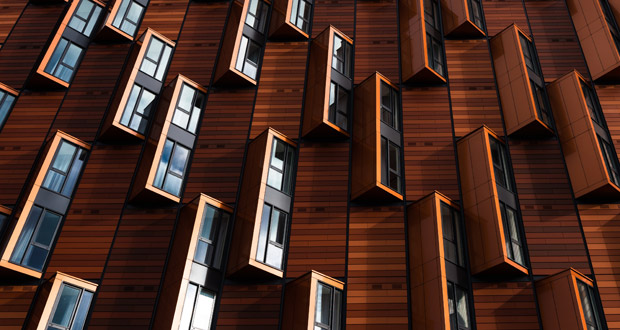
The first impression that a hotel makes has to be one that defines its aesthetic and is appealing to guests. When travelers are searching for hotels either online or in person, the first impression of the hotel will make them decide in a heartbeat if they are going to pay to stay there or not.
But the cladding used on the outside of a hotel affects more than first impressions. It also needs to protect the hotel from the elements, which can be intense depending on where the hotel is located. Seaside hotels need cladding that will hold up against hurricane-force winds and extreme storms. Hotels in snowy climates need to use cladding that won’t fall apart under the weight of lots of snow. And hotels in hot and dry climates need to have exterior materials that won’t fade or crack in the intense sunlight.
The external design elements used for hotels also have to provide moisture control, because any water seeping into the hotel could cause mold to grow, ruining the property and making it uninhabitable. It’s essential that hotels use materials like a building wrap to make sure that no water gets inside, especially hotels that are near the water or in snowy areas where there is a lot of moisture buildup. There are pros and cons to many of the most popular external use materials for hotels.
Wood
Wood cladding for hotels look impressive, but there are drawbacks. Real wood is not a material that is durable enough to be used for hotel cladding. It fades very quickly, especially when exposed to extreme elements, which means it needs replacing or repainting often. Real wood also attracts pests like termites and other insects. A hotel that is attracting insects runs the risk of developing a full-blown infestation that will drive guests away quickly. All it takes is a few reviews on social media mentioning that the hotel has an insect problem and that hotel will face some serious hardship. Wood cladding may be a traditional choice but it’s not a smart choice.
A better choice for hotels that want the look of real wood cladding is modified wood. Modified wood is sustainably harvested softwood that has been treated with a bio-based liquid to make it more durable. Modified wood makes it easy to create beautiful design elements that look like natural wood but are strong and durable enough to withstand extreme conditions.
Steel
Steel siding is a great choice for hotels because it comes in many different colors and can be hung vertically or horizontally to create unique looks. The strength of the steel means that the siding won’t be damaged by extreme weather conditions. Steel siding is also very easy to maintain and will continue to look great for many years. Low-maintenance siding that will last for a long time is what many hotels look for in an external-use material, making steel a smart choice.
Steel log siding can also give hotels a rustic and homey look without the disadvantages of real wood. Steel log siding can totally change the appearance of a hotel or motel when it’s time to change the aesthetic of the business, and it’s easy to install and maintain.
Fiber Cement
Fiber cement siding is a fantastic choice for hotels that want to create the look of architectural siding. Fiber cement house siding has the strength and durability that a hotel or lodging property needs in order to keep maintenance to a minimum while retaining the charm and warmth of a vintage-style building. Victorian-style hotels and lodgings can use fiber cement siding to recreate traditional Victorian-era design motifs and elements that guests will really respond to without having to worry about the constant upkeep that wooden siding requires.
Insulated Concrete Forms
Insulated Concrete Forms, or ICF building materials, are ideal for hotels in hot climates. The insulated concrete promotes energy efficiency and helps to keep the building and the rooms cool without relying on air conditioning. Common areas and the reception area can be cooled by using ICF building materials so that the staff and guests are more comfortable during their check in and check out. And ICF building materials have a fantastic modern appearance that is ideal for hotels that embrace a modern and sleek aesthetic.
About the Author
Matt Lee from Innovative Building Materials is a green design and digital marketing expert. Innovative Building Materials is a website that covers various construction topics and design concepts with a focus on sustainable and stylish building materials.











